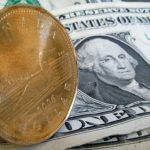Following the yet another batch of negative U.S. economic data on Monday, gold surged above $1 400 and kept its level during the Asian session. The ISM Manufacturing index mismatched predictions by 1.7% and plunged below the neutral level of 50. The value for May stands at 49, significantly below the 50,7 reading for the previous month and the forecast of 50,7.
The Construction Spending indicator for April showed a more positive value, but still missed preliminary estimates. The indicator was supposed to reach 1.0%, up from a revised decrease of 0,8% for the preceding month, but it stood at 0,4%.
Gold for July delivery traded at $1 406,85 a troy ounce at 6:05 GMT, down 0,36% on the day.
Negative U.S. data dampened concerns of a premature Quantitative Easing program slowdown, which has been one of the major factors influencing gold fluctuations this year. Weakening of the greenback causes dollar-priced commodities to gain, as the two trade inversely. As the Dollar Index, which measures the U.S. dollars performance against six major counterparts, dipped 0,9% yesterday, the precious metal was shot up. Gold prices for July delivery climbed 1.4% and spot gold gained 1.7% – the biggest gain since May 20.
Lachlan Shaw, an analyst at Commonwealth Bank of Australia (CBA), wrote in an e-mail to Bloomberg: “Gold advanced on speculation that the Federal Reserve will continue to provide monetary stimulus.” Commodities were supported “as the dollar weakened after an unexpected contraction in the U.S. manufacturing sector.”
This comes after assets in the SPDR Gold Trust expanded for the first time on May 29 for the last three weeks and held positions for the following two days. According to Deutsche Bank AG, sales from the fund may largely be over. The dollar lost positions last week against its major peers following negative economic data. According to the Commerce Department, consumer spending fell 0,2% after the reading for March was revised lower to show a gain of just 0,1%. The Q1 GDP reading stood at an annualized 2.4%, below both the forecast and previous period value of 2.5%.





